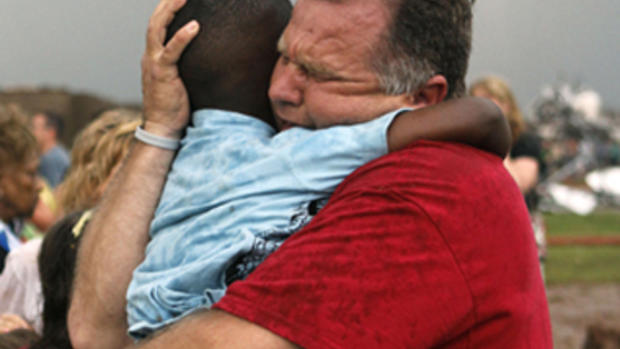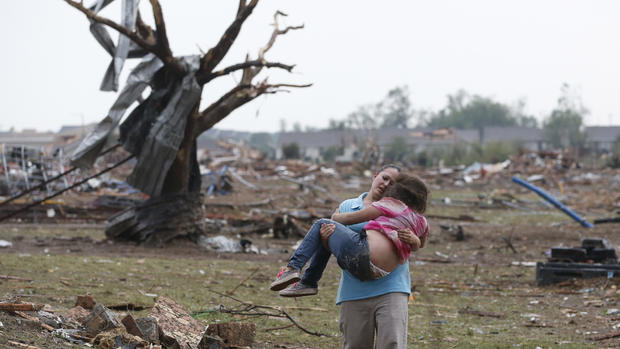Deadly second act: 1999 Moore, Okla. tornado vs. 2013's devastating storm
(CBS News) The City of Moore, Okla., is again a scene of destruction. The city was among the areas hit by the strongest tornado ever recorded 14 years ago.
For an hour-and-a-half on May 3, 1999, the tornado carved a path of destruction. By the end of the day, 44 people were dead, including three children.
Complete coverage: Oklahoma tornado disaster
The massive storm system unleashed a total of 76 tornadoes, including an EF-5 twister that swept through Moore. It registered record-breaking wind speeds of more than 300 miles per hour -- the fastest wind speeds ever recorded on Earth.
Moore bore the brunt of the destruction, registering $800 million worth of damage, with thousands left homeless and hundreds injured.
The tornado that funneled through Oklahoma on Monday hit the town of Moore with 200-mile-per-hour winds, less powerful but still deadly.
One unidentified Moore resident said, "You're not supposed to go through this two times in your lifetime."
The paths of the two tornadoes were chillingly similar, both with this city in their cross-hairs. The one big, destructive difference? The width of the funnel clouds.
Paul Schlatter, meteorologist of National Weather Service, said, "It looks as though the damage width in Moore, Okla., was a little over two miles in width, whereas on May 3, 1999, it was just over one mile wide."
The death toll from Monday was lower than that of the '99 storm but could yet rise.
Nate Billings, photographer for the newspaper The Oklahoman, said, "I've covered a lot of tornadoes, but this one is, by far, the most destructive. When you're first on the scene, it's hard to tell how big it is but I just kept walking and it just kept getting bigger and bigger and bigger...I've never really seen anything quite like this."
For more with Billings and what he saw when he arrived on the scene of the tornado, watch the video below.
Schlatter said, "On May 3, 1999, the storm prediction center in Norman only issued day two-day outlooks, so in other words, an outlook two days before an event was forecast to occur. Today, we go out to eight days for those same forecasts."
Early warning technology has advanced in the past 14 years, but the path of a tornado is still impossible to predict and it's wake is impossible to imagine -- even for a city with memories of bygone devastation, memories that have become all too vivid again.
Watch Charlie Rose's full report in the video above.

